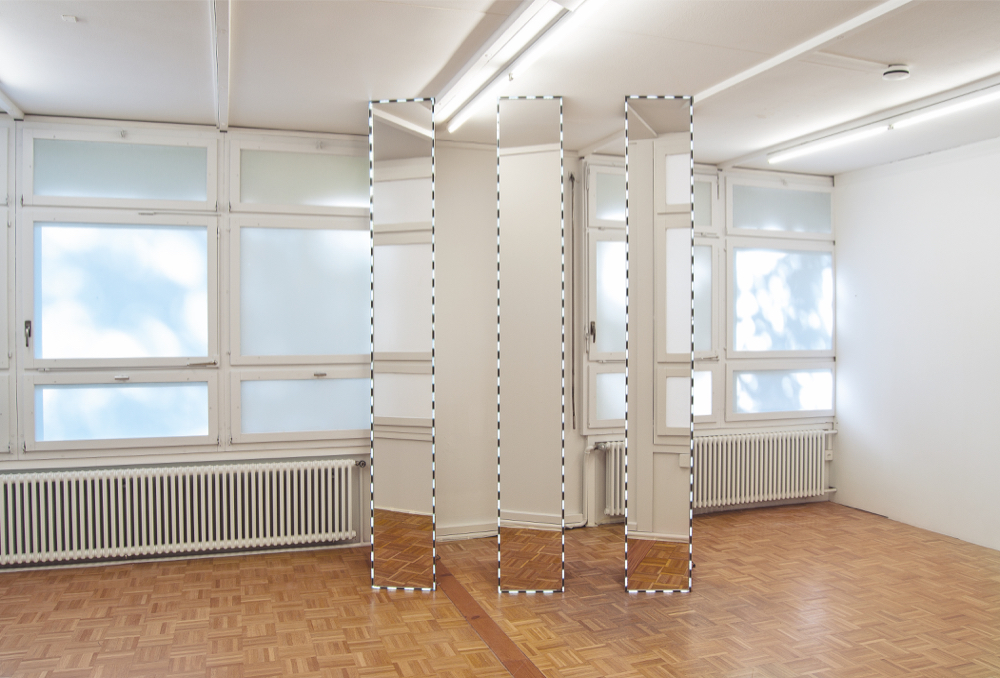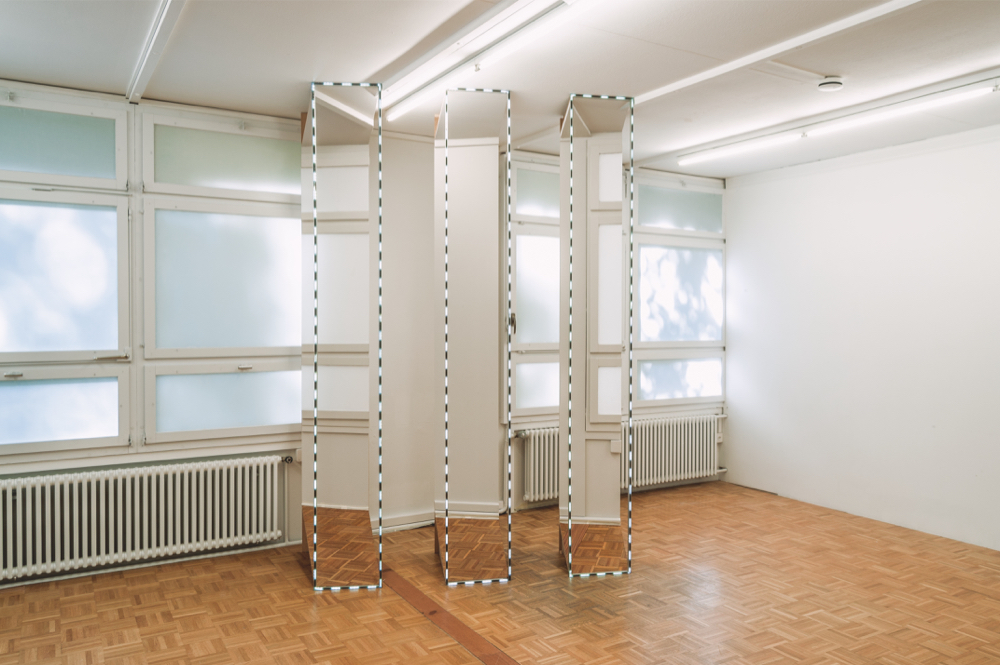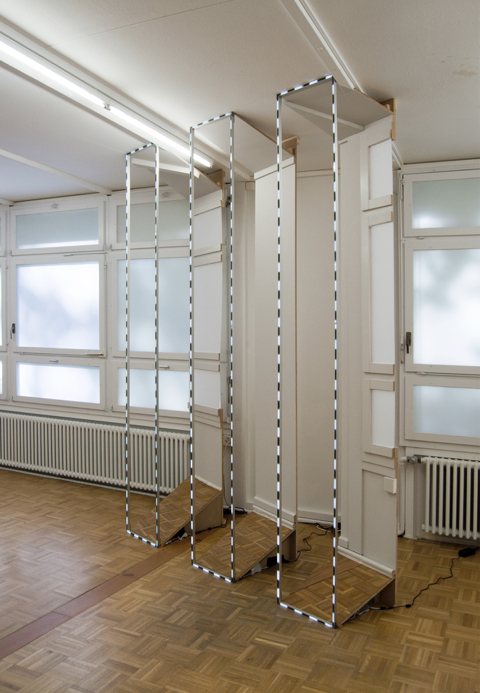Die optische Abkürzung, 2013



Die optische Abkürzung (S)
wood, chipboard, veneer, LED strips, perspex, paint
installation views:
'Die optische Abkürzung'
o.T. / Raum für aktuelle Kunst
Luzern (CH), 2013
The optical abbreviation For o.T. Space for Contemporary Art, I made an intervention in the exhibition space that gives the impression that excerpts of real space had been tampered with in the image-editing program Photoshop. A dashed, flashing frame in Photoshop marks a selected part of the image, which is now being mirrored horizontally in space. The space is treated as if it were an image, creating an interface between image and space. The photographic interpretation of space is mentally present, even when the camera and tripod are not visible. The area behind the inserted frame fits exactly into this cut-out from a specific point of view, the stable point of photography seems fixed. Photography has maintained the illusion of a certain objectivity since its invention, however this belief is fading in our current understanding of digital image manipulation.
I wish to construct an image that has the rigor and logic of laws of perspective, but ultimately evokes an unreal moment. The shimmering light frame seems spatially isolated and out of place; the central perspective is fragile, as it opens up an illusionistic view of the room. My intention is to radically disrupt this reality - as a metaphor for our limited awareness of the daily flood of digital images.
Für o.T. Raum für aktuelle Kunst habe ich einen Eingriff in den Ausstellungsraum vorgenommen, bei dem der Eindruck entsteht, als wären Ausschnitte des realen Raumes im Bildbearbeitungsprogramm Photoshop manipuliert worden. Ein gestrichelter, blinkender Rahmen markiert in Photoshop einen ausgewählten Ausschnitt, der nun im Raum horizontal gespiegelt wird. Indem der Raum behandelt wird, als wäre er ein Bild, wird eine Schnittstelle geschaffen zwischen Bild und Raum. Letzterer wird quasi verbildlicht. Die fotografische Interpretation des Raumes ist gedanklich präsent, auch wenn Kamera und Stativ nicht sichtbar sind. Die Zone hinter dem eingefügten Rahmen passt von einem Standpunkt aus betrachtet genau in diesen Ausschnitt, der feste Standpunkt von Fotografie scheint fixiert. Damit hat die Fotografie seit ihrer Erfindung die Illusion einer gewissen Objektivität aufrechterhalten, welche in Zeiten der digitalen Bildmanipulation zunehmend schwindet.
Ich möchte ein Bild konstruieren, welches die Stringenz und Logik von perspektivischen Gesetzmässigkeiten aufweist, jedoch letztlich einen unwirklichen Moment heraufbeschwört. Die flirrenden Leuchtrahmen scheinen in ihrer Verräumlichung deplatziert, der zentral-perspektivische Raum wird brüchig, es eröffnet sich gleichsam ein illusionistischer Raum im Raum. Meine Absicht ist es die Realität zu stören – als Metapher für eine durch die tägliche digitale Bilderflut radikal beeinträchtigte Wahrnehmung.